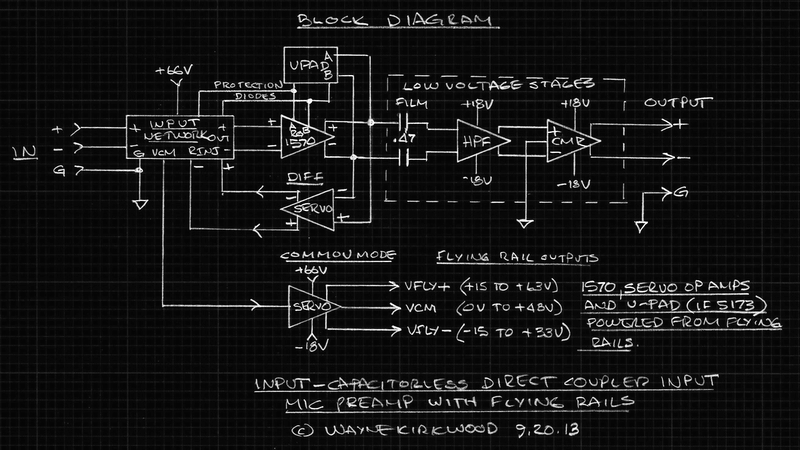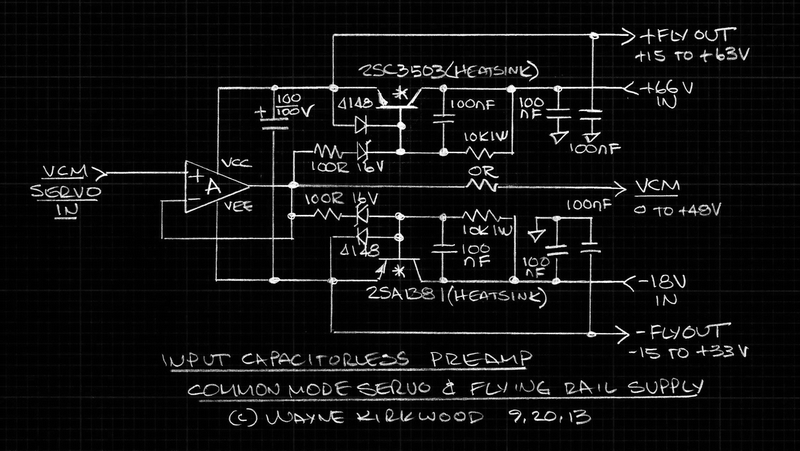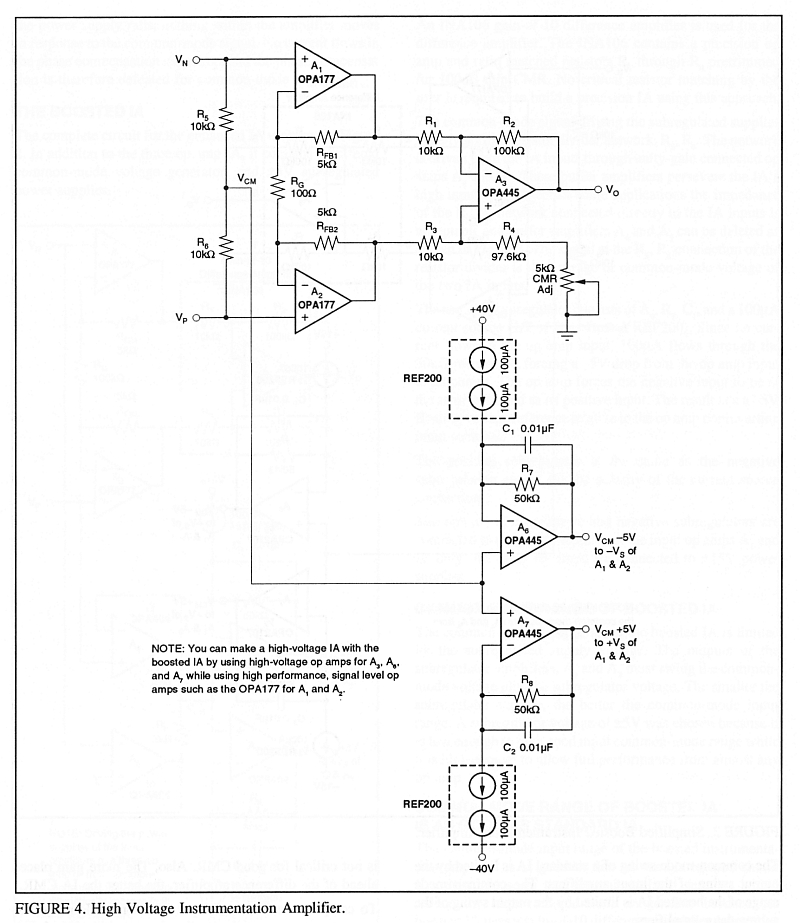JR. wrote: ↑Sun Feb 17, 2019 10:48 am
After thinking about an op amp substitute for my 3-put I though of a couple ways.
Summing the two floating outputs should remove AC (audio) and capture the DC offset we need to subtract out. Sending the floating voltage audio DC coupled into simple grounded inverting op amps,
then adding in an inverted version of the CM DC voltage we should realize a DC coupled 0V referenced output.
(emphasis added.)
JR
May have been down this road...
How much current do you have to do this?
I recall in the early days of this discussion over at Prodigy-Pro the point being raised about "burning off" common mode DC via a differential stage or some other means of subtraction.
If you make the resistors low enough for low noise the power dissipation is high.
Make the resistors too high and the noise degrades.
I think burning off common mode is where many people abandoned a fully DC-coupled method.
IIRC Chalupa used that approach.
It's been 12 years but I think Olaf was the one who brought that up.
If you look at this block diagram, the only part that's unique to being input-capacitorless is the common mode servo. (Shown at bottom.)
 Input-Capacitorless Preamp Overall Block Diagram
Input-Capacitorless Preamp Overall Block Diagram
Most of the "stuff" is "stuff" you'd have in there anyway.
The only real added part is the servo shown here:
 Input-Capacitorless Preamp Feed-Forward Common Mode Servo With Bootstrapped Flying Rail Supply
Input-Capacitorless Preamp Feed-Forward Common Mode Servo With Bootstrapped Flying Rail Supply
The two resistors and the film cap used to sense the
input Vcm are not shown on this drawing. See:
viewtopic.php?f=6&t=598#p6865
The only significant circuitry required to pull off the Vcm servo is an op amp, two transistors and two Zeners.
Maybe there's a simpler way to do it?
I had once thought about using a specialized switcher with a floating auxiliary secondary.
A second center-tapped transformer and +/-15V split supply would float up to Vcm.
The +/-15V floating supplies would bracket around Vcm just like they do now.
Driving the transformer CT would likely require the same buffer as would be used to drive the existing servo/bracketing supply.
The only advantage might be less wasted power.
Is there a solution that's simpler than an op amp and two medium-power transistors?
Maybe use 2X TL431's instead of Zeners?

Oh wait that adds 4X resistors, never mind.

Seriously, how much simpler can this be?
The other thing is you still want is good old-fashioned AC-coupling for a defined high-pass filter.
Without regard to an offset-correcting servo being a high pass filter you really want something to filter the infrasonic or the subway.
There's no point in response to DC unless you're recording strain gauges or earthquakes.
So whether the output is feeding an analog Pultec, a floating converter, or a tin cup attached to a string you still want an analog film-capcitor-based high pass filter to keep from recording or transmitting out-of-band DR-robbing LF rumble.
Maybe you don't want it all the time but you definitely want the button.
You just can't beat a capacitor (or two) for the high-pass function.
At the end of the day all we're doing is moving the coupling caps from the input to the output to make them smaller and film.
The other benefits might be lower equivalent source resistance and removal of stored DC charges from the input transistors.
Whatever added benefits we get from that is fine.
I think that's it in a nutshell: We're just using an op amp to move the coupling caps.

